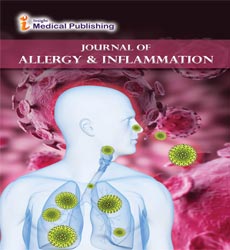Abstract
Knowledge and Awareness of Glaucoma and associated Risk Factors in a selected Urban Community of Bangladesh
Although glaucoma is the second leading cause of irreversible blindness globally, the condition shows no signs or symptoms until later stages. Knowledge about the disease is known to influence utilization of eye screening services. This study aimed at understanding knowledge and awareness of glaucoma and its associated risk factors among residents of urban community of Rajshahi district, Bangladesh. This was a cross-sectional study that employed quantitative data collection methods, with the use of a semi-structured questionnaire. Descriptive statistics were used to describe the socio-demographic characteristics, knowledge and awareness of glaucoma and associated risk factors. Out of a total of 185 respondents, 52.3 % were females and 0.5 % were aware of glaucoma. Majority (99.5 %) of the respondents were unaware of glaucoma and 24.3% (n=45) of the respondents didn't know that the disease can result in blindness. Only (16.2%) affirming that blindness from glaucoma is irreversible. 9.2 % of the respondents perceived themselves to be at risk of developing glaucoma. The results showed that age, sex, level of education, employment status, occupation, residential status, marital status and monthly income of the respondents’ (p<0.05) were statistically significant with glaucoma knowledge level. In addition, the result also showed that age, level of education, employment status, occupation, residential status, marital status and monthly income of the respondents’ (p<0.05) were statistically significant with glaucoma awareness. Glaucoma awareness was not satisfactory and the findings also display inadequate knowledge about glaucoma. So there is a need to effectively inform and educate people about the disease
Author(s):
Shahariar Islam
Abstract | Full-Text | PDF
Share this

Google scholar citation report
Citations : 26
Archives of Inflammation received 26 citations as per google scholar report
Abstracted/Indexed in
- Google Scholar
Open Access Journals
- Aquaculture & Veterinary Science
- Chemistry & Chemical Sciences
- Clinical Sciences
- Engineering
- General Science
- Genetics & Molecular Biology
- Health Care & Nursing
- Immunology & Microbiology
- Materials Science
- Mathematics & Physics
- Medical Sciences
- Neurology & Psychiatry
- Oncology & Cancer Science
- Pharmaceutical Sciences
